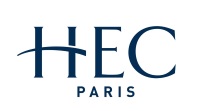No 1396: Secrecy in Open Innovation and Open Innovation in Secrecy
Jonathan Langlois, Sihem Ben Mahmoud-Jouini and Romaric Servajean-Hilst
Additional contact information
Jonathan Langlois: Ecole Polytechnique, Paris
Sihem Ben Mahmoud-Jouini: HEC Paris
Romaric Servajean-Hilst: KEDGE Business School; i3 CRG, École polytechnique, CNRS, IP Paris
Abstract: Previous research have opposed secrecy and openness as mutually exclusive processes. In this paper, we suggest a more nuanced approach to secrecy in open innovation, drawing from Philosophy and Sociology. We have conducted a two-year research program in the defense industry, collecting data on the practices of concealment in open innovation activities. We found that focal actors utilize distinct cognitive techniques to decontextualize knowledge in the course of open innovation projects in order to safeguard secrecy while preserving mutual learning. Further, focal actors design contrasted relational approaches to secrecy with their open innovation partners. Such approaches are based on the positions of secrecy boundaries, which are internal or external to the relationship. In fact, actors intentionally make use of the reversible nature of secrecy, balancing inclusion and exclusion of knowledge in partnerships, to meet objectives that sometimes go beyond knowledge protection. Finally, we build on our findings to introduce a capability-based framework of secrecy management in openness processes. This framework, which we call Knowledge Discretion, suggests that actors overcome tensions stemming from secrecy and openness playing on the contextual depth and relational breadth of external knowledge sharing.
Keywords: Secrecy; innovation
JEL-codes: O30
35 pages, November 4, 2020
Full text files
papers.cfm?abstract_id=3724176 HTML file Full text
Questions (including download problems) about the papers in this series should be directed to Antoine Haldemann ()
Report other problems with accessing this service to Sune Karlsson ().
RePEc:ebg:heccah:1396This page generated on 2025-06-10 11:14:56.

